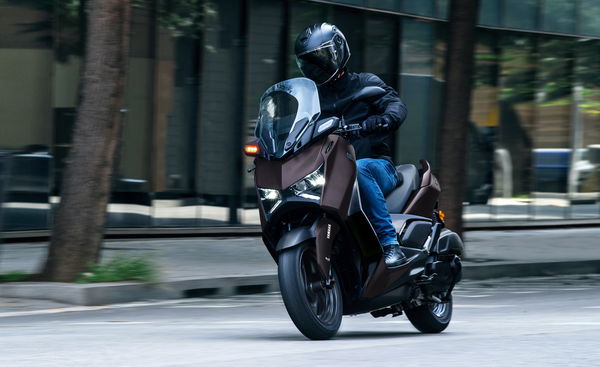Top 10 concept bikes we wish went into production
These showstoppers never went any further – but perhaps they should have

CONCEPT BIKES have been a standard at shows for decades, ranging from clay mock-ups to barely-disguised production models, but many disappear without trace after a brief moment in the limelight.
Sometimes, though, we’re left wondering whether their makers might have been better advised to actually pursue these concepts. In a world where Honda decided to put the DN-01 and NM4 Vultus into production, surely there were more worthy concepts that could instead have been given the go-ahead.
We’re steering clear of the wildest, science-fiction-style creations here in favour of bikes that really had potential to reach showrooms. Sure, the Suzuki Nuda and Yamaha Morpho were interesting, but they were never serious production prospects.
So, on that basis, here are our top 10 concepts that were never seen again despite having so much more to offer than many of their full-production siblings.
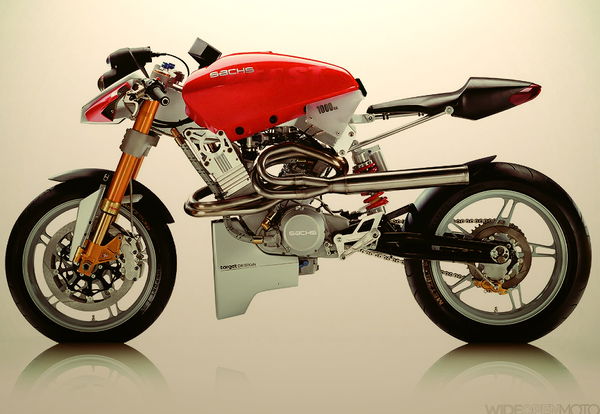
10: Sachs Beast
Sachs isn’t a firm that often makes the front pages of international bike magazines, but when it unveiled the Beast concept back in 2000, it had a winner on its hands. Styled by Target Design – the same firm that came up with the Katana for Suzuki back in 1979 – the Beast featured the 60-degree Folan V-twin that briefly powered the short-lived Swedish Highland motorcycle range. The Beast’s big talking point was its complete lack of a frame – that aluminium 998cc V-twin doubled the entire chassis, promising to make it remarkably light. It was briefly scheduled for production, but a lack of engine supplies helped scupper the project. Instead we got the Sachs B805 that debuted in September 2001. It shared the Beast’s stacked headlights, but little else.
Of course, the Beast’s name played on the fact that ‘Sachs’ sounds a bit like ‘Sex’. The B805 was originally going to go down the same route, and in pre-publicity was called the Sachs Bomb. But since its debut came just days after 9/11/2001, the firm made a last-minute decision to ditch that title.
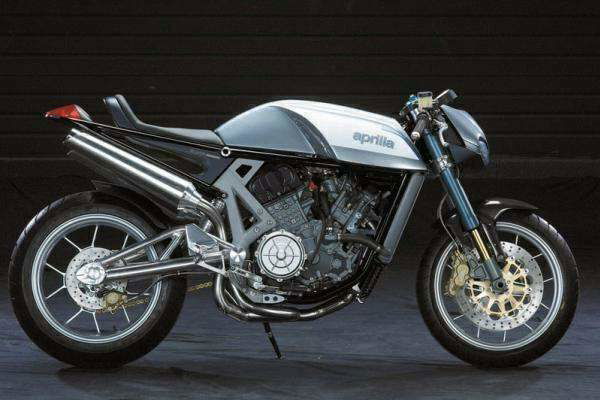
9: Aprilia Blue Marlin
Another concept to appear shortly after the turn of the millennium was the Aprilia Blue Marlin, which took a bow at the 2001 Milan bike show. It instantly looked like it was nearly production-ready, with none of the sci-fi rubbish that adorns so many concept bikes. Bearing in mind that, at the time, Ducati’s MH900e had recently made the leap from 1998 concept bike to 2000 production model, the RSV Mille-powered Blue Marlin looked like it had a real future.
It wasn’t to be, though. Rumour has it that the stripped-back styling that made the bike so attractive left no space for vital bits like the radiator catch tank, electronics and battery. One glance at the real naked Aprilia RSV, the original 2002 Tuono, reveals that there was a lot of that clutter on show. There was also a suggestion that the bike’s airbox would have needed to be so small to fit under the tank that the engine’s power would have been severely restricted.
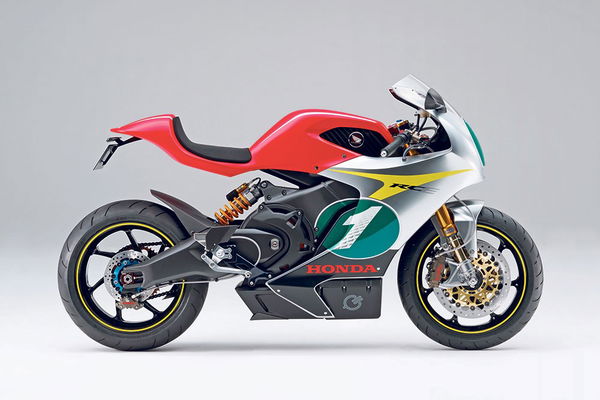
8: Honda RC-E
Back in 2011, when Honda revealed the RC-E electric sports bike concept, it looked like the world’s biggest bike firm was really taking a serious interest in battery power. And what’s more, it was doing it with a bike that would sell on its own appeal rather than some sort of tree-hugging sense of duty.
For a while, the bike really did seem to have a future. Shortly after the RC-E appeared, the Mugen Shinden was revealed as a contender for the 2012 TT Zero, bearing some distinct technical similarities to the Honda despite (officially at least) having no direct Honda involvement.
But while Mugen has kept at its electric race bike development, Honda’s interest in the RC-E appears to have been a fleeting one. Instead the firm has now gone into production with the PCX-E electric scooter – no doubt a more sensible, profitable route to take, but not one that instantly puts the firm on the electric bike map like the RC-E would have done.

7: Yamaha Tesseract
Yes, we said we weren’t including wild, sci-fi-style concepts in this list, and while the Tesseract initially looks like that, it’s actually rooted in the same development project that eventually led to the production Tricity and Niken tilting three-wheelers.
Yes, it’s got four wheels instead of three, and a completely different tilting suspension system, but back in 2007 it was the genesis of the project that, a decade later, led to the Niken’s launch. We’d have preferred the Tesseract to have reached production.
The firm still hasn’t completely ditched the leaning four-wheeler idea, though. On the run-up to the Niken’s launch, it revealed that it had a working prototype four-wheeled tilting bike, dubbed the OR2T. The OR2T was only unveiled in 2015, but its design – and the fact it was powered by a TDM900 engine – show that it’s been in development for a long time. It shared similar suspension to the Tesseract, and videos clearly show it working well.
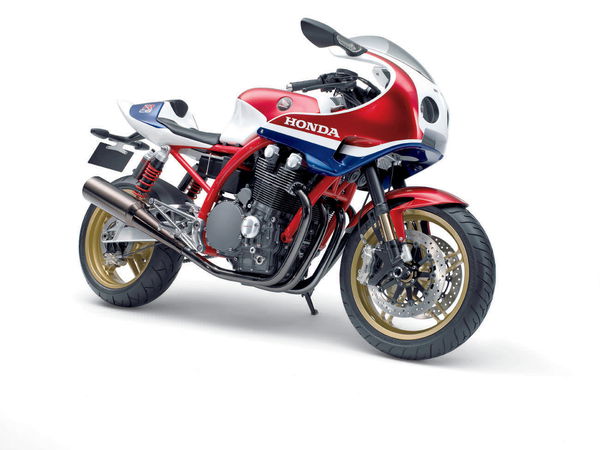
6: Honda CB1100R
Back in 2007, Honda unveiled two concepts for retro-styled, air-cooled, four-cylinder machines. One was the naked CB1100F, which turned into a production bike, almost completely unchanged, in 2010. But Honda chose the wrong concept to pursue.
Why? Because the other 2007 concept was the CB1100R and we can’t help think it would have been a stronger seller than the slightly dull F model.
As the ‘R’ title suggests, the CB1100R was the sports version, with a half fairing inspired by old endurance racers, a single seat with a duck-tail cowling at the back, a lighter-weight frame and a braced, alloy swingarm. Up front there were upside-down forks and radial brakes, while the rear was suspended by a pair of remote-reservoir Showas. Combined with classic white, red and blue Honda race-rep paint, it gathered a huge amount of interest.
Of course, in 2017 Honda did add the CB1100RS to the range as a sportier alternative to the CB1100EX (the F’s replacement), but it still doesn’t come close to capturing the appeal of the 2007 CB1100R concept, which could so easily have gone into production just as it was.

